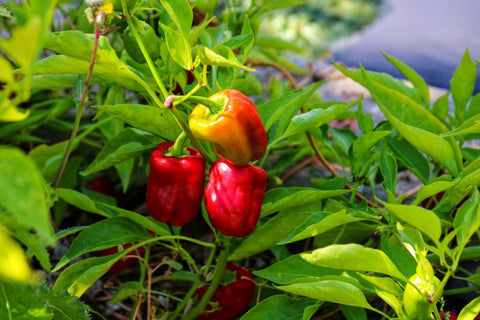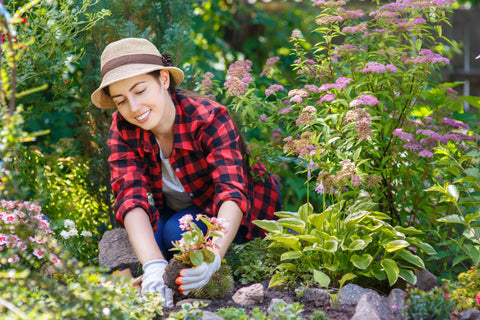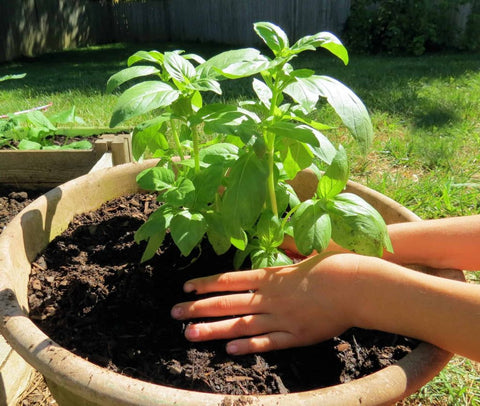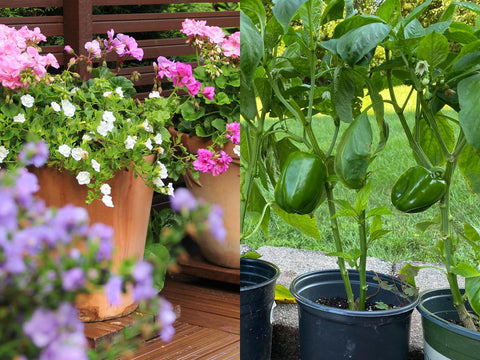When we think of wildflowers, spring and summer often come to mind, with their vibrant blooms adorning meadows and gardens. However, the beauty of wildflowers doesn't fade with the arrival of fall. As temperatures cool and days grow shorter, a different cast of wildflowers takes center stage, creating a stunning display of autumnal hues. In this comprehensive guide, we will explore a variety of wildflowers that thrive in the fall, celebrating their resilience and the vivid tapestry they weave into the changing seasons.The following content also has some reference value for raised garden beds.

The Charm of Fall Wildflowers
Autumn's wildflowers are a testament to nature's adaptability and tenacity. As the landscape transforms from the lushness of summer to the earthy tones of fall, these wildflowers add a burst of color and life to the fading greenery. Here are some reasons why fall wildflowers are so enchanting:
Rich Palette of Colors
- Fall wildflowers come in a diverse range of colors, from fiery reds and oranges to deep purples and golden yellows. They create a stunning contrast against the backdrop of changing foliage.
Food for Pollinators
- Many fall wildflowers provide essential nectar and pollen for pollinators like bees, butterflies, and hummingbirds as they prepare for the upcoming winter months.
Resilience and Adaptation
- These wildflowers have evolved to thrive in the changing conditions of autumn, including cooler temperatures and shorter daylight hours.
Naturalizing Gardens
- Fall wildflowers are excellent for naturalizing gardens, as they often self-seed and return year after year, requiring minimal maintenance.
Let's delve into a selection of fall wildflowers, celebrating their unique characteristics and the beauty they bring to the autumn landscape.
1. Aster
Asters are a beloved group of wildflowers known for their daisy-like blooms. They come in a variety of colors, including shades of pink, purple, and blue. Asters are excellent late-season nectar sources for pollinators, making them an essential addition to any fall garden.
Varieties to Consider:
- New England Aster: Known for its vibrant purple flowers, this native species attracts butterflies and bees.
- Smooth Aster: Produces delicate blue or purple blossoms and is a favorite among pollinators.
2. Goldenrod

Goldenrods are often wrongly accused of causing hay fever (which is primarily triggered by ragweed). In reality, these sunny wildflowers are important late-season nectar sources for bees and butterflies. They sport striking golden-yellow flower spikes.
Varieties to Consider:
- Canada Goldenrod: A tall species with arching clusters of bright yellow flowers.
- Zigzag Goldenrod: Characterized by its zigzag stems and feathery clusters of yellow blooms.
3. Joe-Pye Weed
Joe-Pye weed is a stately wildflower with tall, imposing stalks crowned by fluffy clusters of pink or mauve flowers. It attracts a variety of pollinators, including butterflies and bees. Its foliage often turns deep red in the fall, adding to its autumn appeal.
Varieties to Consider:
- Spotted Joe-Pye Weed: A native species with striking purple-pink flower heads.
- Boneset: A close relative with clusters of white blossoms and distinctive perfoliate leaves.
4. Sedum
Sedums, often referred to as stonecrops, are succulent plants that thrive in the fall. Their fleshy leaves and clusters of star-shaped flowers provide late-season nectar for pollinators. Sedums are available in a range of colors, including shades of pink, white, and red.
Varieties to Consider:
- Autumn Joy Sedum: This popular cultivar features large, rosy-pink flower heads that deepen in color as they age.
- Showy Stonecrop: Known for its brilliant pink blooms and compact growth habit.
5. Toad Lily
Toad lilies are charming, shade-loving wildflowers that bloom in the fall, adding a touch of elegance to gardens with limited sunlight. They feature unique, orchid-like flowers that come in various shades, often with distinctive speckles or markings.
Varieties to Consider:
- Tricyrtis hirta: A Japanese species known for its star-shaped flowers with purple spots.
- Tricyrtis formosana: Features pendulous, lily-like blossoms in shades of pink and purple.
6. Japanese Anemone
Japanese anemones are graceful perennials that brighten up shady corners of the garden in the fall. They produce elegant, cup-shaped flowers in shades of pink or white. These late bloomers are a favorite of bees and butterflies.
7. Chrysanthemum
Chrysanthemums, commonly known as mums, are perhaps the most iconic fall flowers. They come in a wide range of colors, including traditional autumnal shades like orange, red, and bronze. Mums are popular additions to fall gardens and floral arrangements.
Varieties to Consider:
- Hardy Garden Mums: These perennial mums are available in numerous cultivars, each with its unique color and flower form.
- Korean Chrysanthemum: A species native to Korea, it produces charming yellow or white daisy-like flowers.
8. Russian Sage

Russian sage is a woody perennial known for its aromatic, silvery-gray foliage and tall spikes of lavender-blue flowers. While it blooms from late summer into fall, its striking appearance and late-season nectar make it a valuable addition to fall gardens.
9. Helenium
Helenium, also known as sneezeweed, is a perennial wildflower that comes alive in the fall. Its daisy-like flowers, often in shades of red, orange, and yellow, provide an important food source for pollinators preparing for winter.
Varieties to Consider:
- Helenium autumnale: Native to North America, this species features rich, autumnal shades of red and yellow.
10. Caryopteris
Caryopteris, commonly known as bluebeard or blue spirea, is a shrubby perennial that bursts into bloom in late summer and continues through the fall. Its clusters of small, blue or violet flowers are a magnet for butterflies.
Varieties to Consider:
- Caryopteris × clandonensis 'Dark Knight': Known for its deep blue-violet blossoms, this cultivar is a favorite for late-season color.
11. Witch Hazel
Witch hazel is a unique deciduous shrub or small tree that blooms in the late fall or early winter. Its fragrant, spidery flowers can range from pale yellow to fiery orange and often appear before the leaves drop.
Varieties to Consider:
- Hamamelis virginiana: Native to North America, it features delicate yellow flowers with a sweet fragrance.
- Hamamelis x intermedia 'Arnold Promise': Known for its vibrant golden-yellow blossoms, this cultivar is a popular choice for fall landscapes.
12. Calendula
Calendula, also known as pot marigold, is a cheerful annual that blooms well into the fall. Its bright, orange or yellow flowers add a pop of color to gardens and can be used in culinary and medicinal applications.
13. Autumn Crocus
Autumn crocus, sometimes called meadow saffron, is a true harbinger of fall. These bulbous plants produce goblet-shaped flowers in shades of lavender, pink, or white, appearing without foliage.
14. Beautyberry
Beautyberry is a deciduous shrub known for its clusters of vibrant purple or magenta berries that persist into the fall. The berries serve as a valuable food source for birds.
15. Japanese Maple
Japanese maples are renowned for their stunning foliage, which undergoes a dramatic transformation in the fall. The leaves can turn fiery shades of red, orange, or yellow, adding a touch of elegance to the autumn landscape.
Cultivating Fall Wildflowers

Bringing the beauty of fall wildflowers into your garden is a rewarding endeavor. Here are some tips to help you cultivate these vibrant blooms:
- Select Appropriate Varieties
- Choose fall-blooming wildflowers that are well-suited to your region's climate and soil conditions.
- Plant at the Right Time
- Fall wildflowers are typically planted in late spring or early summer to ensure they establish strong root systems before blooming in the fall.
- Provide Adequate Sunlight
- Most fall wildflowers thrive in full sun to partial shade, so ensure they receive the right amount of sunlight for their specific requirements.
- Amend Soil as Needed
- Prepare the soil by adding organic matter to improve drainage and fertility.
- Water Wisely
- Keep the soil consistently moist, especially during dry spells, to promote healthy growth and flowering.
- Mulch and Fertilize
- Apply a layer of mulch to conserve moisture and suppress weeds. Use a balanced, slow-release fertilizer to provide essential nutrients.
- Deadhead Spent Flowers
- Regularly deadhead (remove spent flowers) to encourage continuous blooming and prevent self-seeding in unwanted areas.
- Consider Wildlife
- Leave some seed heads and spent flowers in your garden to provide food for birds and wildlife during the colder months.
Final Thoughts
Fall wildflowers offer a captivating display of colors, shapes, and textures that breathe life into the autumn landscape. Whether you're looking to enhance your garden's beauty, attract pollinators, or simply enjoy the splendor of the changing seasons, these wildflowers have much to offer. Embrace the charm of fall wildflowers and celebrate the artistry of nature as it transitions from summer's warmth to the crisp embrace of autumn.









